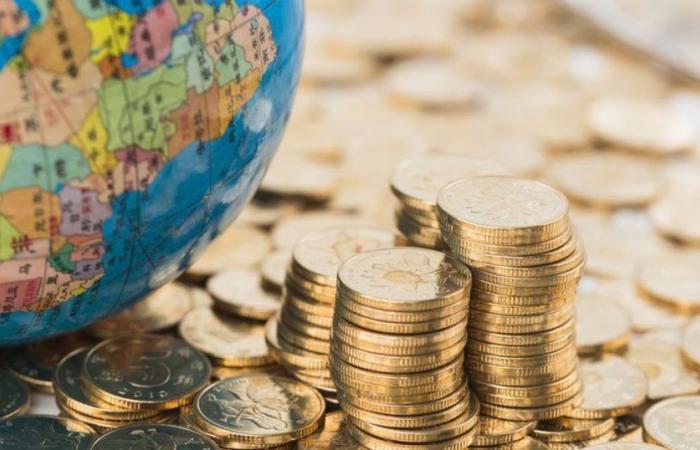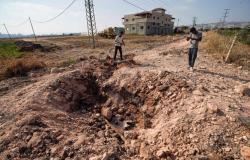The public debt of African countries had exceeded 1,800 billion dollars in 2022, an increase of 183% compared to its 2010 level. Of this amount, the total external debt of the continent stood at 1,120 billion dollars, before increasing to 1.152 billion dollars. Its structure has changed significantly in recent years. Commercial debt represented, in 2022, 43% of the total debt of African countries, compared to 20% in 2000. This means that the share of the private sector in the debt of African countries continues to grow.
This is explained by the fact that African countries are increasingly resorting to the international debt market to finance their large budget deficits and certain projects, notably infrastructure. In recent years, there has been growing interest in Eurobonds issued in a foreign country and denominated in foreign currencies (particularly dollars and euros).
These offer numerous advantages: access to currencies and therefore the reconstitution of foreign exchange reserves, the possibility of using the income as they wish and the listing of Eurobonds on international stock exchanges offering greater transparency on the debt. In addition, these bond loans allow several African countries to restructure their debt and finance their investments in infrastructure. These advantages were all the more important the lower the interest rates were.
A situation which has pushed many African countries to resort to these bond loans. Thus, in sub-Saharan Africa, for example, only South Africa had issued sovereign bonds before 2006. But since that date, more than twenty countries in the region have used this method of financing, taking advantage low interest rates, causing the share of commercial loans in the external borrowing of States to inflate.
Read also: The handful of countries expected to achieve a budget surplus in 2024, according to the WB
However, if low interest rates encouraged African countries to opt for these bond loans, the situation has since changed. Because of the Covid health crisis and especially the Russia-Ukraine war, historically low interest rates in the United States have risen sharply under the leadership of the Federal Reserve (Fed). The latter has revised its key rates upwards on several occasions to cope with the high inflation induced by shortages of food products (wheat and oilseeds in particular) and the surge in hydrocarbon prices (oil, gas, coal, etc.). ). This impacted interest rates on US Treasury bonds and, through a domino effect, borrowing rates in the global debt market.
As a result, African countries, hit hard by the economic crisis which has weakened their economies, pushing them to resort more to financing on the international market, are currently faced with prohibitive rates, in the wake of the rise in American rates.
Indeed, the continent’s average financing cost is around 11.5%, a level 8.5 percentage points higher than the American benchmark risk-free rate. If this borrowing rate differs from one country to another, it is clear that this high level affects all African countries, even if some of them are faced with prohibitive financing costs. This is the case for Egypt, Tunisia, Niger, Ghana…
Read also: Senegal: the IMF lowers its 2024 growth forecast to 7.1%
Thus, Ivory Coast raised 2.6 billion dollars at 8.5% and Benin 750 million at 7.9%. However, economically struggling Kenya raised $1.5 billion at a premium of more than 10%. The country was due to repay $2 billion in June 2024. A rate which is justified by fears of payment default.
More recently, it is Senegal and its new regime which went on the market for what constitutes its 7th bond issue on the international debt market by raising 750 million dollars with an interest rate of 7.75% for a maturity of 7 years. This rate can be explained by the start of the decline in American rates, the good growth prospects of the Senegalese economy, the start of exploitation of oil and soon gas and the low risk of payment default in the country.
Overall, these rates remain very high and will weigh heavily on the debt service of African countries which have borrowed heavily on the debt market in recent years, despite unfavorable rate conditions.
How can we explain these prohibitive rates? Beyond the rise in American rates which serve as a reference, lenders look at several variables: GDP per capita, viability of external financial operations, current account, debt rate, external debt/exports ratio, macroeconomic stability (rate of inflation in particular),…
These are all factors that are taken into account by international rating agencies which assign, to each country, credit ratings which reflect, in their eyes, its repayment capacity. And unfortunately, the ratings given to African countries have continued to deteriorate in recent years, in an already difficult global economic environment.
Read also: Sovereign debt: out of 23 payment defaults recorded by Fitch since 2009, 5 are African
More clearly, the problem lies at the level of the “Africa premium”, that is to say the risk premium that the countries of the continent must pay when they exit on the capital market, despite data showing that default rates in Africa are lower than those in other regions of the world. According to an ADB report, “a Moody’s analysis of global infrastructure failure rates shows, for example, that the African continent ranks better, with 5.5%, than Asia, with 8.5%, and Latin America, with 13%.».
Unfortunately, it is this perception of risk in Africa, reflected by global rating institutions (Standard & Poor’s, Moody’s, Fitch, etc.) which leads to a very often unjustified increase in borrowing costs for African countries.
Proof that these risks are exaggerated, all exits by African countries on the debt market are successful despite the risks of payment default. Moreover, the latest exits from African countries on the debt markets have all been oversubscribed at least 3 times. This is the case of Ivory Coast, Benin, Kenya and Senegal. This reflects the interest of foreign investors in the debt of African states and the exaggeration of “Africa risk”.
Read also: Ivory Coast: behind record growth, debt is debated
However, by entering the international debt market and accepting financing at such high interest rates, these African countries are incurring harmful consequences by making themselves even more vulnerable to new exogenous shocks. For example, Kenya devotes 60% of its tax revenue to debt service. And the raising of 1.5 billion dollars last February at a rate of 10.37% should simply be used to repay the debt already contracted and not to finance the country’s development projects.
This use of international loans denominated in hard currencies is not without risks for African countries. Debt rates are soaring everywhere. Several African countries are faced with very high debt services which are a significant burden on their budgetary revenues. Thus, the continent taken as a whole would have to repay $163 billion in debt service this year alone, while this amount was only $61 billion in 2010.
This growing debt service burden could hamper the continent’s development and prevent it from achieving its Sustainable Development Goals, particularly in health, education and infrastructure.
And to get out of this, over-indebted countries are required to resort to the services of the International Monetary Fund (IMF). This is the case of Ghana, which has seen its economic dynamism slowed down by the difficult economic situation, high inflation linked to the surge in prices of imported products and the drastic reduction in the country’s foreign exchange reserves. The deterioration of economic fundamentals, including worrying twin deficits (budget deficit and current account deficit), has brought the country to the brink of payment default, pushing it to resort to support from the IMF.
Read also: The 5 African countries most indebted to the IMF
Ultimately, to avoid high costs and limit the likelihood of a new debt crisis, African countries are calling for an overhaul of the global lending system to increase support for debt-ridden developing countries. Thus, on the sidelines of the G7 Summit which was held recently in Italy, Kenyan President William Ruto called on the 7 richest countries in the world to promote the overhaul of the global financial system to give the countries of the South “access to financing on preferential, long-term and flexible terms».
Long before the Kenyan president’s exit, other personalities had called for this reform. This is the case of the President of the African Development Bank (AfDB), Akinwumi Adesina, who underlined, during the 2023 Annual Meetings of the institution in Sharm el Sheikh in Egypt, that “There is an urgent need to reform the global financial system and debt architecture to reduce the costs, delays and legal complications of restructuring the debt of African countries».
Beyond the costs, this overhaul of the global lending system should also allow for better alignment of loan repayment times in relation to the projects financed. Indeed, short repayment periods for financing as heavy as long-term infrastructure pose problems for African countries. Sometimes loans must be repaid before projects are even finalized.






